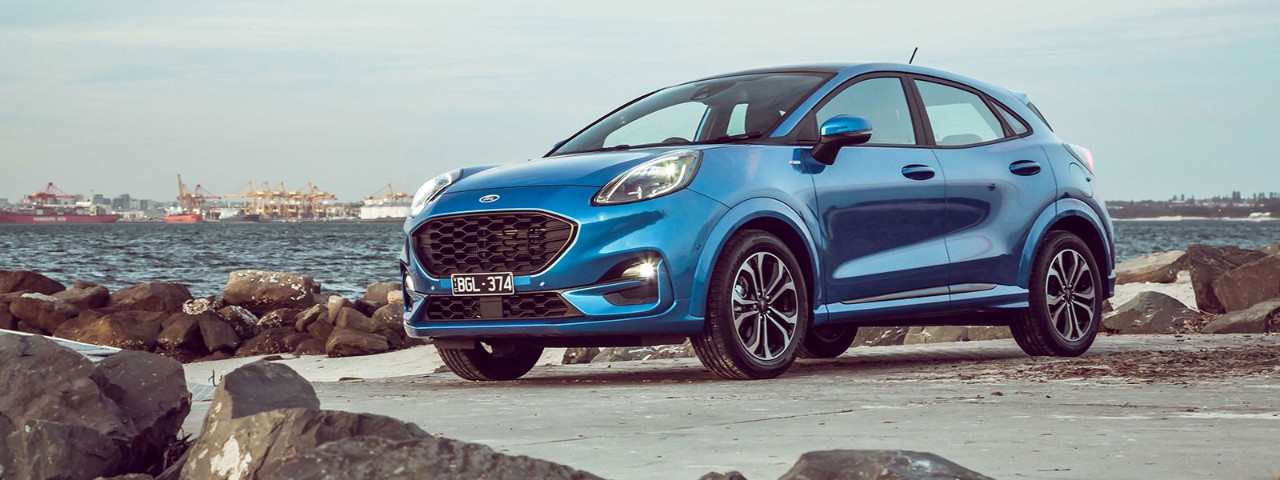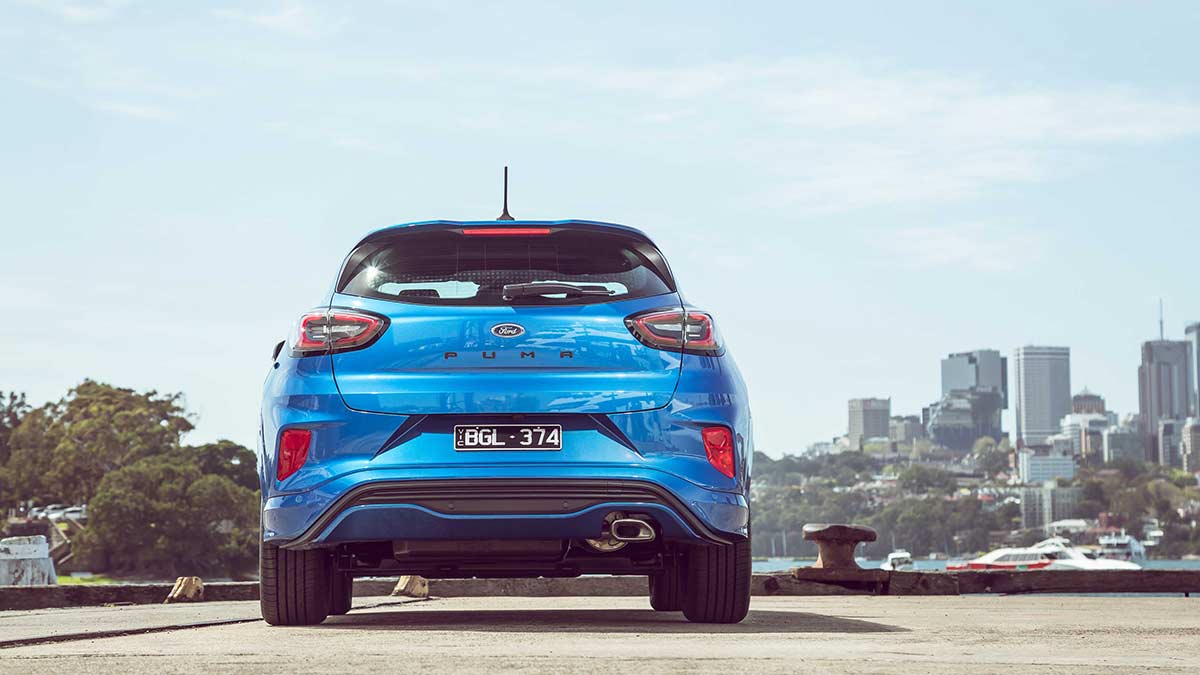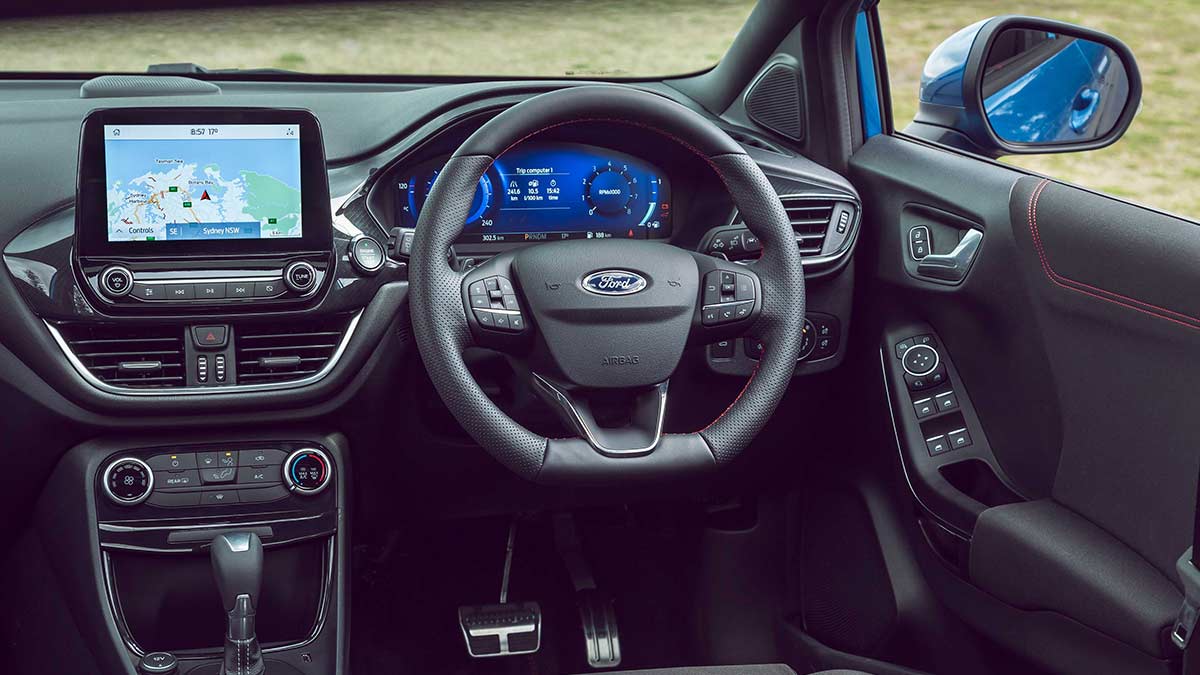The ninth-generation Toyota HiLux has arrived, bringing with it a futuristic forward exterior design, more safety and tech and the same rugged capability owners love. Will the updates tempt private buyers away from the Ford Ranger or are they just enough to keep fleets onside?
Ford Puma ST-Line 2021 road test review

Tim Nicholson puts the all-new Ford Puma light SUV through its paces.
Ford has resurrected the Puma nameplate for its new light SUV, but that’s all it shares with the compact sportscar of the same name from the late 1990s. The European-sourced Puma replaces the slow-selling, Indian-built EcoSport as the entry to Ford’s SUV line-up. It’s landing in a hot segment and fighting for attention with some impressive competitors. Can the Puma claw its way to the top of the light SUV pack?
Thumbs up
- Funky styling
- Standard safety gear
- Huge and flexible boot space
- Enjoyable to drive
Thumbs down
- Pricey compared to some rivals
- Tight rear seat
- Sync3 infotainment starting to age

The Puma is perfect for style-focused buyers who also love a weekend blast on some twisty roads.
How much does a Ford Puma cost?
The Puma has a sporty bent and Ford is pitching it in semi-premium territory with its pricing and equipment levels. Pricing kicks off from $29,990 for the entry variant, simply called Puma, increasing to $32,340 for the ST-Line we tested and topping out at $35,540 for the ST-Line V. It’s a big departure from the EcoSport’s $22,790-$28,990 price range, but it’s a vastly different (and better) offering, despite the two models sharing some underpinnings.
Standard equipment is generous – as it should be at this price. It includes Ford’s full multimedia suite as standard on all variants, and sporty exterior styling treatments. The base Puma misses a few things, but nothing dire. The only quirk is that the mid-range ST-Line we drove gets manual climate control, whereas the base Puma and flagship ST-Line V have automatic. Ford Australia says all Pumas built from July will be fitted with automatic climate control as standard.
Our test car was fitted with options including premium paint ($650), a black roof ($500) and the Park Pack ($1500) that adds automated parking, adaptive cruise control with stop and go function, front parking sensors and blind spot monitor. That brought the price up to $34,990 – although the Park Pack is recommended.
Australian buyers have a growing list of light SUVs to choose from, including the Nissan Juke, its Renault Captur cousin, the Volkswagen T-Cross and its Skoda Kamiq cousin, the Toyota Yaris Cross, Kia Stonic, Mazda CX-3 and Hyundai Venue.
What safety features does it have?
Ford has included key active safety features as standard on all Puma variants (see table below), including a 5-star ANCAP rating, but a blind spot monitor is only available as part of an option pack.
The Puma’s lane keep assist gets a big tick. It keeps the vehicle centred in the lane and adjusts its position smoothly, without the sharp adjustments evident in some of these systems. The forward collision warning, however, is a little overzealous, activating even when vehicles ahead were braking at a safe speed.

Inside, the Puma boasts funky styling, plenty of standard safety gear and flexible boot space.
What's the space like inside?
In terms of exterior design, the cute bug-eye front-end, pert rear and sporty stance will appeal to many buyers looking for a funky small SUV.
Previous Ford models had awkward dash layouts and sub-optimal driving positions, but models like the Focus, Escape and Puma represent a major upgrade.
It’s slightly smaller in all dimensions (except width) than the Juke, but larger in all areas (except height) than the CX-3.
The Puma shares its underpinnings with the Fiesta light hatch. As a result, the functional, yet generic dash layout is identical.
Ford’s Sync3 infotainment system is well executed, but what was once a market-leading system is now just good. Graphics are dated and the menu layout is a little clunky.
Thankfully, the Puma has a regular automatic gear shifter, as opposed to the dial found in the Focus and Escape.
As expected from Ford, the front seats are nicely cushioned and well bolstered, but require manual adjustment. The ST-Line gets sporty red stitching on the seats, doors and console.
Rear headroom is ample but knee room behind my own driving position is average. The rear seats are flat, and it lacks rear vents, USB ports and a central armrest, but has map pockets.
The Puma’s 410-litre boot is one of the biggest in its class. Under the floor there’s 80 litres of useful space in the shape of a plastic-lined tub with a drain hole, which was a perfect fit for a pair of beach chairs. Bag hooks and a 12-volt outlet are handy additions. Under that is a space-saver spare wheel.
How does it drive?
All Puma variants are powered by Ford’s award-winning 1.0-litre three-cylinder turbo-petrol engine delivering 92kW and 170Nm.
There’s turbo lag when accelerating from a standing start, but it achieves a lot for such a small powertrain. It’s got more poke than expected, maintaining power up a few big hills, and it feels more responsive than the Juke.
Upshifts from the seven-speed dual-clutch automatic transmission are a little sharp when accelerating hard, but it does a fine job at regular speeds around town.
You feel low to the ground and planted in the Puma, like a hatchback. That’d be the Fiesta underpinnings. Steering is precise and there’s some weight to it too.
The Fiesta ST we tested last year [add link please] was a blast and you can feel its DNA in the Puma. The MacPherson strut front and torsion beam rear suspension setup is geared for sporty driving and it delivers sharp handling.
It’s flat through tight corners, offering plenty of grip. It’s probably the most dynamically engaging light SUV on the market.
The ride on the 17-inch wheels is on the firm side, with large potholes making their presence felt, but low-speed ride is easy to live with.
Sport mode firms up the ride, but response isn’t drastically improved.
In Europe, Ford has launched a warmed-up Puma ST variant that uses the same 147kW 1.5-litre engine as the Fiesta ST, but sadly it’s not on the cards for Australia.
The Puma has a surprisingly quiet cabin. The engine is so quiet when you hit the start button it’s hard to tell if it’s actually on.
We recorded fuel consumption of 6.7 litres per 100 kilometres after a week of extensive driving, a little more than Ford’s 5.3L/100km claim.
|
Pricing |
List price: $32,340 before on-road costs. Price as tested: $34,990 before on-road costs. Model range: $29,990-$35,540 before on-road costs. |
|---|---|
|
Drivetrain |
1.0-litre three-cylinder turbocharged petrol engine, Power: 92kW@6000rpm Torque: 170Nm@1500-4500rpm. Wheels: 215/55 R17. |
|
Fuel |
Premium unleaded petrol, 42-litre tank. Consumption: 5.3L/100km (government test), 6.7L/100km (RACV test). Emissions: 121g/km CO2 emissions.est). |
|
Standard safety |
Five-star ANCAP rating, autonomous emergency braking with pedestrian protection, lane departure warning, lane keep assist, cruise control, traffic sign recognition, tyre pressure monitor. |
|
Standard features |
Wireless device charging, 8.0-inch touchscreen with Sync3 infotainment system, Apple CarPlay/Android Auto, DAB+ digital radio, 12.3-inch digital instrument cluster, rain sensing wipers, push button start. |
|
Warranty |
Five-year/unlimited kilometre warranty. Four-years/60,000km capped-price servicing plans. Servicing schedule every 12 months/15,000km. |


